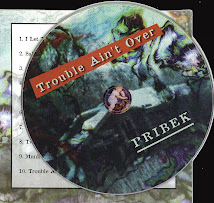Steve Douglass | Thursday, April 15, 2010 | [Source]
Washington (CNN) -- The Obama administration's vision for the future of manned space flight will bump the United States to "second or even third-rate" status as a space-faring nation, the commanders of three U.S. moon missions warned Wednesday. [See: also "Last Shuttle Launch Bumped until November HERE"]
The space shuttle's components include: the orbiter, three main engines, the external tank, and two solid rocket boosters. Altogether, the launch weight is about 4.5 million pounds.
 Orbiter: Each orbiter is 121 feet long, with a wingspan of 78 feet and a tail height of 57 feet. Constructed mainly of aluminum, it is about the size of a DC-9 commercial airliner, and can carry a payload of 65,000 pounds into space. The payload bay is 60 feet long and 15 feet in diameter. The landing weight varies from mission to mission and ranges from 200,000 pounds to 230,000 pounds. Each orbiter is designed for a lifetime of about 100 space missions. The forward fuselage houses the cockpit and crew cabin and crew work areas. The mid-fuselage area consists of the payload bay and the wing and main landing gear attach points. The aft fuselage houses the main engines, the orbital maneuvering system (OMS), the reaction control system (RCS) pods, the wing aft spar, and the attach point for the vertical tail.
Orbiter: Each orbiter is 121 feet long, with a wingspan of 78 feet and a tail height of 57 feet. Constructed mainly of aluminum, it is about the size of a DC-9 commercial airliner, and can carry a payload of 65,000 pounds into space. The payload bay is 60 feet long and 15 feet in diameter. The landing weight varies from mission to mission and ranges from 200,000 pounds to 230,000 pounds. Each orbiter is designed for a lifetime of about 100 space missions. The forward fuselage houses the cockpit and crew cabin and crew work areas. The mid-fuselage area consists of the payload bay and the wing and main landing gear attach points. The aft fuselage houses the main engines, the orbital maneuvering system (OMS), the reaction control system (RCS) pods, the wing aft spar, and the attach point for the vertical tail. Main Engines: The main engines operate on a mixture of liquid oxygen and liquid hydrogen, each engine producing a sea level thrust of 375,000 pounds and a vacuum thrust of 470,000 pounds. The engines can be throttled over a thrust range of 65 to 109 percent, allowing a high power setting during liftoff and initial ascent, and a power reduction during final ascent to keep acceleration of the orbiter at three earth gravities. The engines are gimbaled (movable) to control pitch, yaw, and roll. Normal engine operating time on each flight is about 8.5 minutes. Each engine is designed for about 7.5 total operating hours.
Main Engines: The main engines operate on a mixture of liquid oxygen and liquid hydrogen, each engine producing a sea level thrust of 375,000 pounds and a vacuum thrust of 470,000 pounds. The engines can be throttled over a thrust range of 65 to 109 percent, allowing a high power setting during liftoff and initial ascent, and a power reduction during final ascent to keep acceleration of the orbiter at three earth gravities. The engines are gimbaled (movable) to control pitch, yaw, and roll. Normal engine operating time on each flight is about 8.5 minutes. Each engine is designed for about 7.5 total operating hours.External Tank: The external tank is 154 feet long and 28.6 feet in diameter. It is constructed primarily of aluminum alloys. Empty weight of an external tank is 78,100 pounds. When filled and flight ready, each has a gross weight of 1,667,677 pounds and contains nearly 1.6 million pounds (143,060 gallons) of liquid oxygen and more than 226,000 pounds (526,126 gallons) of liquid hydrogen. The external tank is the only major part of the space shuttle system not reused after each flight.
Solid Rocket Boosters: The space shuttle solid rocket boosters are the largest solid propellant motors ever built and the first to be used on a manned spacecraft. Each motor is made of 11 individual weld-free steel segments joined together with high-strength steel pins. Each assembled motor is 116 feet long, 12 feet in diameter, and contains more than l million pounds of solid propellant. The propellant burns at a temperature of 5,800 degrees Fahrenheit and generates a liftoff thrust of 2.65 million pounds. The exhaust nozzles are gimbaled to provide yaw, pitch, and roll control to help steer the orbiter on its ascent path. The solid propellant is made of atomized aluminum powder (fuel), ammonium perchlorate (oxidizer), iron oxide powder (catalyst), plus a binder and curing agent. The boosters burn for two minutes in parallel with the main engines during initial ascent and give the added thrust needed to achieve orbital altitude. After two minutes of flight, at an altitude of about 24 miles, the booster casings separate from the external tank. They descend by parachute into the Atlantic Ocean where they are recovered by ship, returned to land, and refurbished for reuse. (SOURCE)
FLY THE FRIENDLY SKIES....!!!!
*
*
*










No comments:
Post a Comment